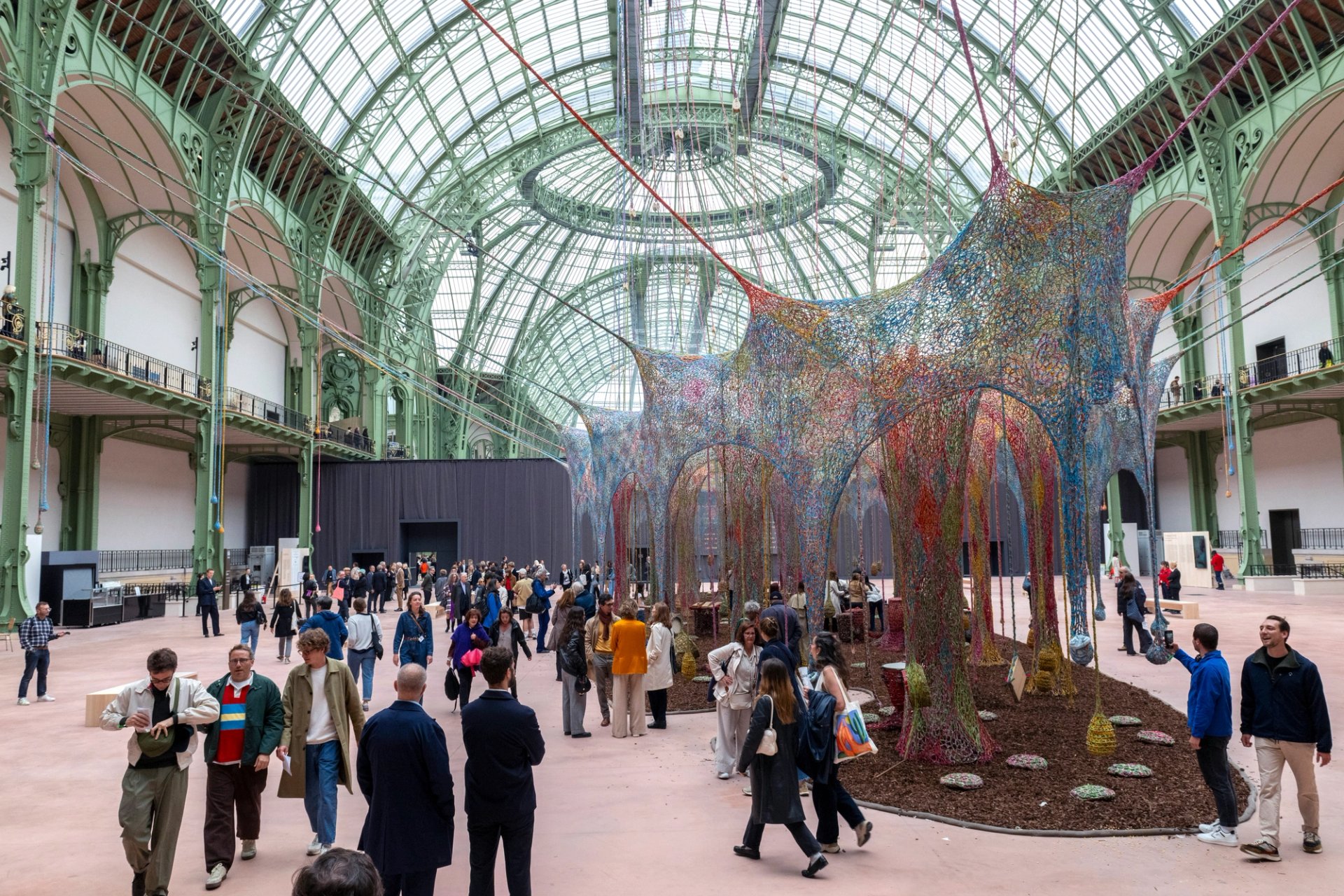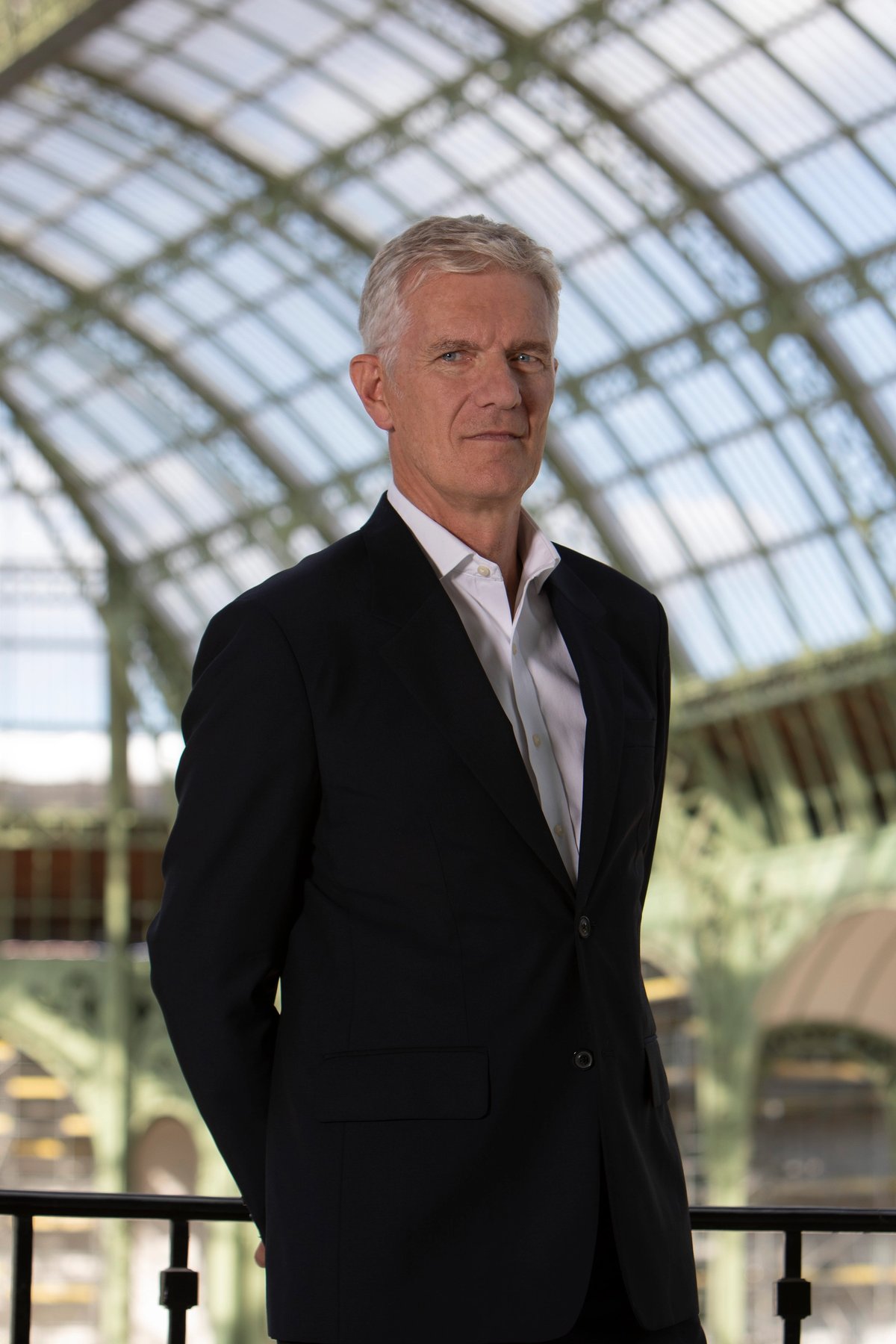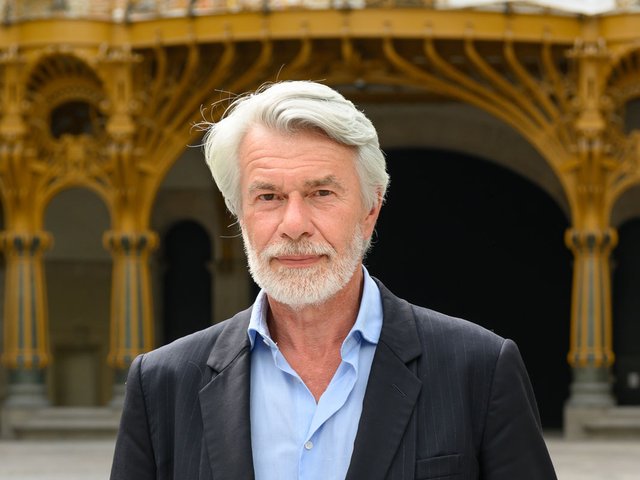TAN: The reopening of the Grand Palais is being celebrated in grand style with “Grand Palais d’été,” a new programme featuring, in partnership with the Centre Pompidou, talks and performances under the “Fun Palace” banner, exhibitions including Niki de Saint Phalle, Jean Tinguely, Pontus Hultén, Bruno Decharme’s Art Brut collection, 16 contemporary tapestries by Danish artists, and “Euphoria. Art is in the air”. The programme also includes live performances, concerts, and large-scale public events. Does this blend of formats reflect the kind of programming we can expect in future?
DF: My approach, from the very beginning, has been to open things up to the widest possible audience. I’ve always believed that it’s not our role to define what constitutes good taste, but rather to present a broad spectrum of possibilities: “Fun Palace” with the Centre Pompidou, major art exhibitions, and also large-scale installations designed to match the scale of the Grand Palais, such as Nosso Barco Tambor Terra by the Brazilian artist Ernesto Neto.
A portion of these new 7,000 sq. m spaces, set within this remarkable architectural setting, is now freely accessible to the public. These exhibitions and events are meant to bring a certain joy, a pleasure simply in being within the building. The idea is to breathe new life into the space, thanks to the sponsorship from Chanel, which made the “Grand Palais d’été” possible. We began with Vertige by Rachid Ouramdane, Chassol and Nathan Paulin, an experience that simply couldn’t have happened anywhere else. Everyone who saw it was left with an extraordinary memory. With “Le grand palais de ma mère” by Mohamed El Khatib, we offered something completely different. That’s why we divided the Grand Palais into three distinct zones. We’ll do the same next year; with a section dedicated to live performance and a major exhibition that is ticketed, but with more of an entertainment focus.
What is your medium-term vision for this historic venue in the heart of Paris?
My vision is, first and foremost, one of collaboration. We’re fortunate to be working with the Centre Pompidou, it’s an incredible asset. The same goes for partnerships with Les Manufacture Nationale, Chaillot, and soon with the Paris Opera and the Opéra-Comique. The Grand Palais is a place where major institutions, leading talents, and smaller-scale initiatives come together. At the moment, we’re also working with the Maison de la Danse in Lyon. The Grand Palais is a national palace—it belongs to everyone.
It’s also a palace without a collection. We have architectural heritage, but nothing to exhibit. What gives this place life is the energy and vision of others: artists like Pascal Dusapin, the great composer who has worked here, or Claire Tabouret and Eva Jospin, two contemporary artists who will be creating work here in November. Tomorrow, it might be Matisse, Cezanne... From the outside, it might seem like a jumble. But this is exactly the kind of thoughtful eclecticism we embrace.
We don’t want to dictate what the public should see or desire when they come to the Grand Palais. If Euphoria. Art is in the air isn’t your thing, you can visit “Niki de Saint Phalle, Jean Tinguely, Pontus Hultén. Or you can enjoy both. I’ve always supported this notion of permeability. Richard Shusterman, an American philosopher I admire, said: “We must stop separating popular art from high art.” There are ridiculous things in so-called high art, and there are sublime elements in popular art. It’s in the intersection between the two that something truly universal emerges. You can be both accessible and intellectually ambitious.
That said, entering the Grand Palais isn’t always easy. The building is imposing. If you didn’t grow up visiting museums—if your parents didn’t take you to places like this—it can feel intimidating. So we have to actively encourage people to come. Ernesto Neto is, in a way, an artisan of celebration. His work is about encounter. “Fun Palace” is also about gathering, about dialogue, about exchange. It carries the same spirit. People will come together, interact, connect. That’s what the Grand Palais is becoming.

Ernesto Neto © Grand Palais Rmn 2025, Didier Plowy
Drawing on your experience at La Grande Halle de la Villette, you’re aiming not only to broaden the audience but also to rejuvenate it—with late-night programming and even clubbing.
Yes, that’s a deliberate and clearly stated intention. In our view, these are evenings that don’t really end. They may start with a performance and then continue in a different form.
What’s so special about late-night events at the Grand Palais is that night falls almost imperceptibly. You arrive while it’s still light—especially in summer, of course, under a blue sky. The performance takes place, and by the time it’s over, night has fallen. And that is truly magical.
When we kept the Chiharu Shiota exhibition open until midnight, hosted Dolce & Gabbana events until 2 am and the skating rink until 5am, we attracted a nocturnal audience—a much younger crowd, people who go out late. We’re in Paris, after all, on the Champs-Élysées. That wasn’t part of the original plan. But given the turnout, we extended the hours. The last visitors were entering the exhibition with tickets at 2 a.m.! And we reopened at 8 a.m. – because, on the other end of the spectrum, you have people who wake up early, families with young children.
For us, the Grand Palais must be highly adaptable. We’ve always said it: this is a palace of festivities. Antoine Vitez spoke of “an elitist theatre for everyone.” That’s the kind of ambition we must live up to. In the morning or late at night, it’s the same exhibition, but not the same state of mind. And that’s something deeply gratifying.
You’ve cited Vitez’s Théâtre National Populaire as a model. You yourself come from the world of live performance, from the Folies de Maubeuge in the 1990s to the Maison des Arts in Créteil. A sense of theatre seems deeply embedded in your cultural DNA…
Absolutely. It's very much about continuing that spirit, that philosophy. Those bold ambitions for cultural democratisation are rooted in places, physical spaces that people need to access, spaces that create a sense of desire and belonging.
Jean Vilar once said, “Children are the key to the treasure.” We've signed an agreement with the school districts of Paris, Créteil, and Versailles. Teachers come with their students to visit the exhibitions. Then, each child leaves with a ticket for two, inviting them to return over the weekend. They become guides for their parents. It may sound simple, but often, they bring along adults who have never set foot in such places.
School really is the ultimate entry point. It’s up to us to make sure that children come to the Grand Palais—and that they return, accompanied. Building long-term relationships is essential. We’ve launched a very straightforward subscription and a pass system, both of which have been met with great enthusiasm.
Our aim is to make the Grand Palais a celebration—somewhere people want to go, somewhere that becomes part of their lives.
You also place yourself within a particular vision of culture inherited from the era of Jack Lang [former politician and president of the Institut du Monde Arabe] – decentralisation, “elitism for everyone”…
I have immense admiration for Jack Lang. I’m very much a child of that era. I lived through that extraordinary explosion: the doubling of the culture ministry’s budget. All it took was to be young and full of ideas, we were encouraged and supported.
There was a real sense of humility then. No one imagined they were reinventing the wheel. Others before us had achieved far greater things. What we’re trying to do now is to draw inspiration from that legacy and adapt it to the times we live in—an era where everything costs more and is more complicated.
It’s a spirit of invention, of freedom; not just for artists, but for the public too. Take Vertige, for example: we invited audiences to experience it sitting on the floor of the nave. When do you ever find yourself sitting on tatami mats these days, lying next to your partner, watching a performance?
It’s crucial that everyone feels at ease, able to engage in ways that reflect their own convictions and way of life. And that’s possible at the Grand Palais for a very simple reason: the sheer scale of the space. People can find their own corner, a place that feels like theirs. They might scroll through their phones, sit down to read a book… Places like this are essential.
It’s the same approach we took with the four young Brazilian artists featured in the Horizontes painting exhibition, part of the France–Brazil 2025 season. Visitors came for the spectacular installation by Ernesto Neto, and, climbing the stairs, they discovered these emerging artists. We saw people who had never set foot in a museum standing before beautiful, powerful artworks, visibly moved. That’s exactly the kind of experience we want to offer.

VERTIGE Photo: © Quentin Chevrier
What are your plans following this first summer programme, which you hope to establish as an annual event?
We’d love to present the vibrant creative scene emerging from Marseille. This year, we’re spotlighting Brazil, with a major free Rio–Paris ball taking place in the nave on 5 July.
I think that if, each year, we were to invite a major city—whether in France or abroad—to take over the Grand Palais in all its richness and diversity, it could be something truly joyful and dynamic. The Grand Palais is a space without limits.
The neighbouring Palais de la Découverte was due to reopen in June with a series of public events, many of which were ultimately cancelled. On 12 June, following a meeting of the council of ministers, President Macron dismissed Bruno Maquart, the president of Universcience—the public institution that has overseen the Cité des Sciences et de l’Industrie and the Palais de la Découverte since 2009—amid tensions with the minister of culture. The science museum has expressed concern about a potential takeover of the Palais d’Antin, its home since 1937, by the Grand Palais. The ministry of culture has raised the possibility of relocating the institution to the Cité des Sciences at La Villette. The minister for higher education and research has since expressed support for its continued presence within the Grand Palais. What is your position?
This issue does not fall within my remit. It is a decision that rests with the president and the minister of culture. I have only spoken in relation to the building itself. From the very beginning, the reopening of the Grand Palais was planned in three phases: first, the Olympic Games; then the arrival of the Centre Pompidou; and finally, the Palais d’Antin, which is due to open in December.
At the time of the reopening, the Palais d’Antin was not yet operational. The chief architect, François Chatillon, wrote to the minister explaining that the spaces were not fit for use. That decision was not mine.
We co-produced Transparence, the first children’s exhibition, together with the Universcience teams. But I do believe that it’s perfectly reasonable—when reopening a facility of this scale—to reflect on how it should function. The debate is open: how can we reimagine the role of science in Paris?
The Cité des Sciences is twice the size of the Grand Palais. It’s a place I’m very fond of, with outstanding teams. Some are trying to create the impression that science has suddenly vanished from Paris; though for reasons that have very little to do with science itself. For them, Paris stops at three arrondissements. They say the Cité des Sciences is too far away.
But perhaps it’s time to shift perspective—and adopt a more modern outlook.



